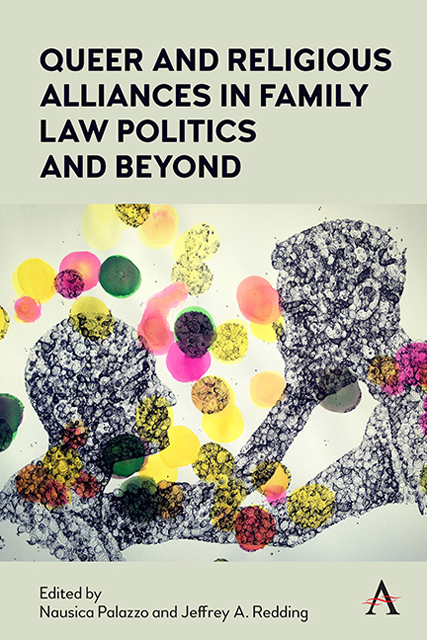Introduction
Published online by Cambridge University Press: 09 December 2022
Summary
With same-sex couples having gained marital recognition in a number of prominent jurisdictions around the globe, it might appear that the struggle for the legal recognition of nontraditional families is over. But that is not the case. There continue to be families not recognized by a multitude of legal systems, including nonconjugal unions of friends or relatives, polyamorous relationships of more than two persons, and various religious families (including polygamous ones). These families embody a queer resistance to normalcy in family life as they challenge through their lived experience “sexual regimes of normalization” (Cossman 2019, 25) and find themselves at odds with “the normal, the legitimate, the dominant” (Halperin 1995, 62).
The misalignment between law and the reality of modern families continues with the effect that traditional (dyadic, heterosexual) marital families are prioritized when allocating benefits, rights, and obligations. This book explores counterintuitive ways of addressing this legal imbalance by staging an uncomfortable yet necessary conversation concerning a potentially conjoined queer–religious politics challenging “common-sense” (often majoritarian) norms and practices in family law. Such a politics requires looking beyond traditional allies, strategies, and discourses. We are especially intrigued by whether some religious groups might be allies in pluralizing family law in ways beneficial to queer politics. The intuition is that, when it comes to the legal regulation of intimate connections, certain religious subjectivities have more in common with those involved in queer politics than liberal politics.
A number of religious groups have shown an interest in promoting alternative family structures, which is a topos in queer activism as well. For example, with nondyadic unions, an oft-overlooked shared interest in overcoming the monogamous paradigm (commonly engrafted into state law) unites supporters of polyamory and polygamy. As a result, a common desire to overcome law's monogamous paradigm could unite queer polyamorists located in northern California, for example, with splinter “orthodox” Mormon communities living in Utah.
The potential for queer and religious groups to converge has occasionally been investigated before, especially in the U.S. context. For example, Andrew Koppelman's latest (2020) book on LGBT rights and religion has perceptively intervened into the ongoing debate over whether U.S.
- Type
- Chapter
- Information
- Publisher: Anthem PressPrint publication year: 2022

